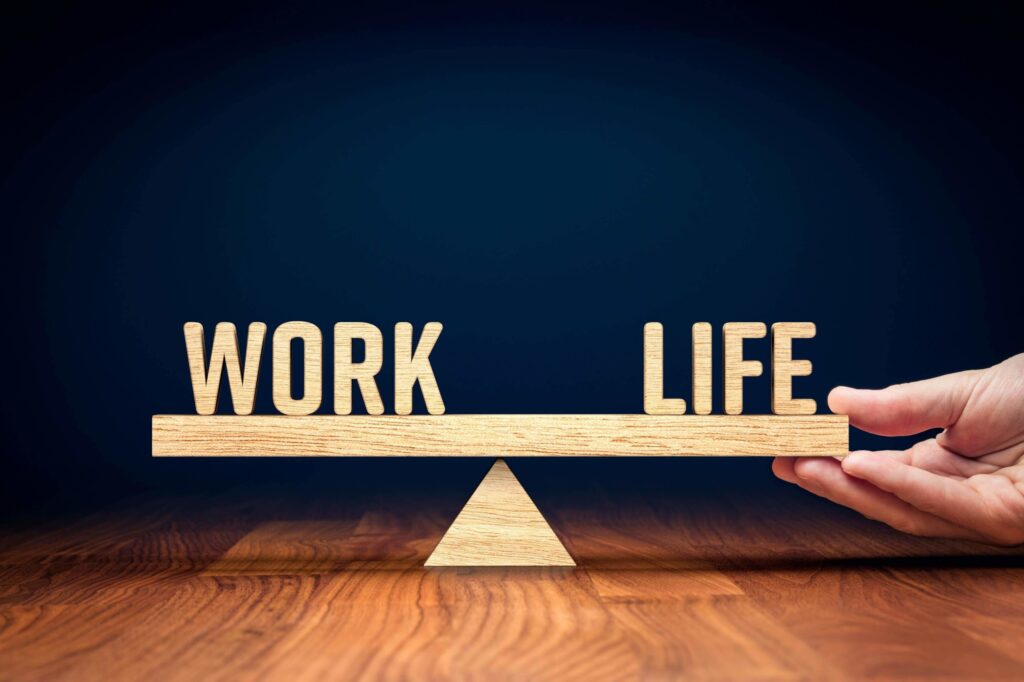As we step into 2024, the importance of maintaining a healthy work-life balance has never been more crucial. In today’s fast-paced world, where the lines between professional and personal life often blur, finding harmony is essential for reducing stress and enhancing overall well-being. This article, “Work-life Balance: Tips For A Stress-free 2024,” will provide you with practical strategies and insights to help you navigate the challenges of modern life while prioritizing your mental and emotional health.
Throughout this article, you will discover effective techniques to manage your time better, set boundaries, and create a more fulfilling daily routine. We will explore the significance of self-care, the role of mindfulness in reducing stress, and how to cultivate supportive relationships both at work and at home. By implementing these tips, you can transform your approach to work and life, leading to a more balanced and enjoyable existence.
Are you ready to take control of your life and make 2024 your most stress-free year yet? Join us as we delve deeper into the essential tips for achieving work-life balance. With the right mindset and tools, you can create a lifestyle that not only meets your professional goals but also nurtures your personal happiness. Keep reading to unlock the secrets to a harmonious and fulfilling year ahead!
Achieving a healthy work-life balance is essential for maintaining mental and physical well-being. As we approach 2024, it’s crucial to adopt strategies that promote a stress-free lifestyle. Below are six key areas to focus on for a more balanced life.
Setting Boundaries Between Work and Personal Life
Establishing clear boundaries between work and personal life is vital for reducing stress. This means defining specific work hours and sticking to them. When the workday ends, make a conscious effort to disconnect from work-related emails and calls. This separation allows you to fully engage in personal activities, whether it’s spending time with family, pursuing hobbies, or simply relaxing.
Additionally, communicate these boundaries to your colleagues and supervisors. By setting expectations, you create a culture of respect for personal time, which can lead to a more supportive work environment. Remember, a well-rested mind is more productive, so prioritize your downtime.
Prioritizing Self-Care
Self-care is not just a buzzword; it’s a necessity for maintaining a healthy work-life balance. Incorporating regular exercise, a balanced diet, and sufficient sleep into your routine can significantly impact your overall well-being. Physical health directly influences mental health, so make time for activities that rejuvenate you.
Consider creating a self-care schedule that includes activities you enjoy, such as yoga, reading, or spending time outdoors. This intentional approach to self-care can help you recharge and manage stress more effectively, leading to a more fulfilling life both at work and at home.
Embracing Flexible Work Arrangements
Flexible work arrangements, such as remote work or flexible hours, can greatly enhance your work-life balance. Many companies are now offering these options, recognizing that employees are more productive when they have control over their schedules. If your workplace allows it, take advantage of these arrangements to create a routine that suits your lifestyle.
Flexibility can also mean adjusting your work environment. Whether it’s working from a coffee shop or your home office, find a space that inspires you. This adaptability can lead to increased job satisfaction and reduced stress levels, making it easier to balance your professional and personal commitments.
Time Management Techniques
Effective time management is crucial for achieving a stress-free work-life balance. Techniques such as the Pomodoro Technique or time blocking can help you stay focused and productive during work hours. By breaking your work into manageable chunks, you can maintain concentration and reduce feelings of overwhelm.
Additionally, prioritize your tasks using methods like the Eisenhower Matrix, which helps you distinguish between urgent and important tasks. This approach allows you to allocate your time wisely, ensuring that you complete essential work while still leaving room for personal activities.
Building a Supportive Network
Having a strong support network is essential for maintaining a healthy work-life balance. Surround yourself with friends, family, and colleagues who understand your goals and challenges. Sharing your experiences and seeking advice can provide valuable insights and encouragement.
Consider joining professional groups or online communities related to your field. These networks can offer support, resources, and opportunities for collaboration, helping you feel less isolated in your work journey. A supportive environment fosters resilience, making it easier to navigate the stresses of both work and personal life.
Continuous Learning and Adaptation
As we move into 2024, it’s important to embrace continuous learning and adaptation. The world of work is constantly evolving, and staying informed about new trends and tools can help you maintain a competitive edge while also enhancing your work-life balance. Attend workshops, webinars, or online courses to develop new skills that can streamline your work processes.
Moreover, regularly assess your work-life balance strategies. What works for you today may not be effective in the future. Be open to adjusting your approach as needed, ensuring that you remain aligned with your personal and professional goals.
| Tip | Description |
|---|---|
| Set Clear Boundaries | Define specific work hours and personal time to avoid overlap and ensure dedicated time for both work and relaxation. |
| Prioritize Tasks | Use tools like to-do lists or digital planners to prioritize tasks based on urgency and importance, helping to manage workload effectively. |
| Take Regular Breaks | Incorporate short breaks throughout the day to recharge, which can enhance productivity and reduce stress levels. |
| Practice Mindfulness | Engage in mindfulness practices such as meditation or deep breathing exercises to improve focus and reduce anxiety. |
| Stay Active | Incorporate physical activity into your daily routine, as exercise is proven to reduce stress and improve overall well-being. |
| Limit Screen Time | Set limits on non-work-related screen time, especially before bed, to improve sleep quality and mental health. |
| Seek Support | Don’t hesitate to reach out to friends, family, or professionals for support when feeling overwhelmed. |
| Embrace Flexibility | Be open to adjusting your work schedule or environment to better suit your personal needs and enhance work-life balance. |
| Reflect and Adjust | Regularly assess your work-life balance and make necessary adjustments to ensure it aligns with your personal and professional goals. |



